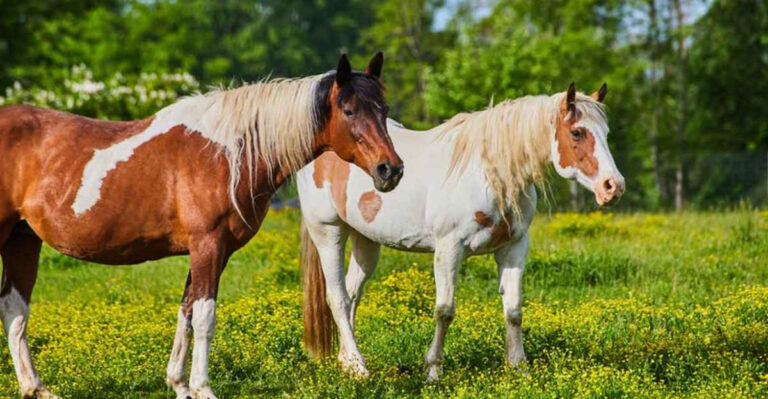12 Proven Tips To Calm An Agitated Horse
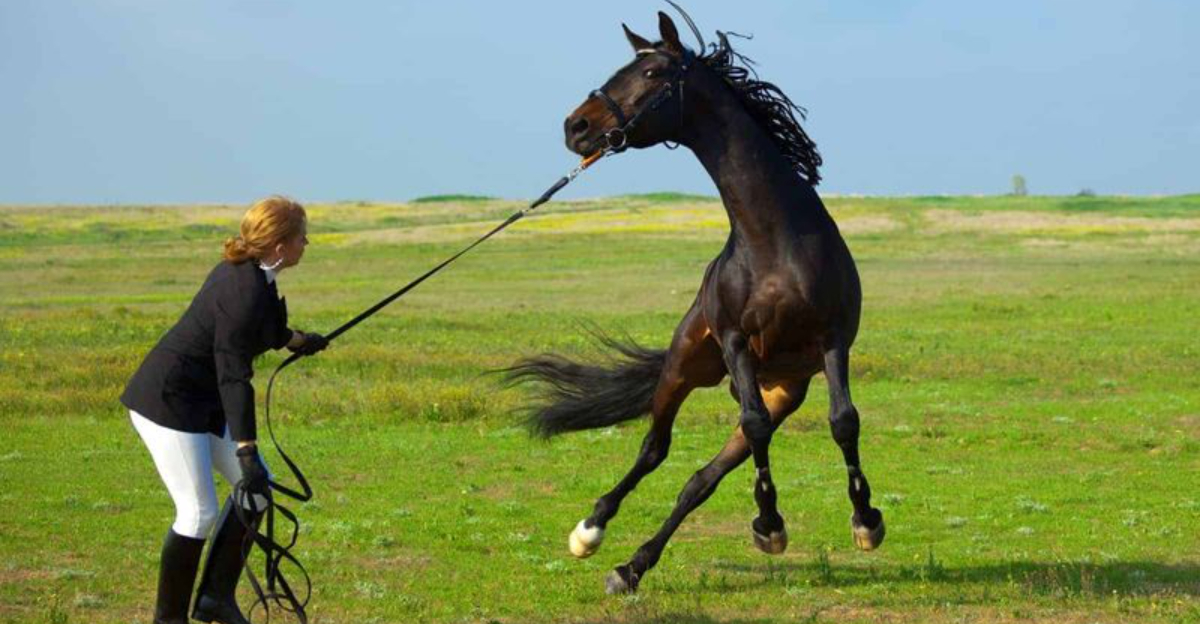
Horses are sensitive creatures that can become agitated for many reasons – from loud noises to unfamiliar surroundings.
When your equine friend gets worked up, knowing how to safely calm them down is essential for both your safety and their wellbeing. These proven techniques will help you de-escalate tense situations and build a stronger bond with your horse.
1. Recognizing The Signs Of Agitation
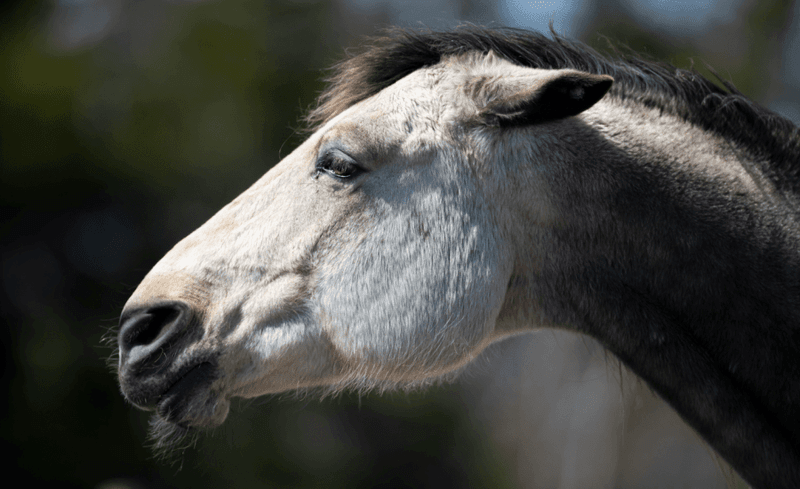
Flared nostrils, pinned-back ears, and tail swishing are telltale signs your horse is upset. Watch for pawing at the ground, wide eyes showing the whites, or excessive head tossing.
Agitated horses may also circle restlessly, refuse commands, or become suddenly rigid. Catching these signals early gives you the best chance to intervene before the situation escalates.
2. Maintaining A Calm Demeanor
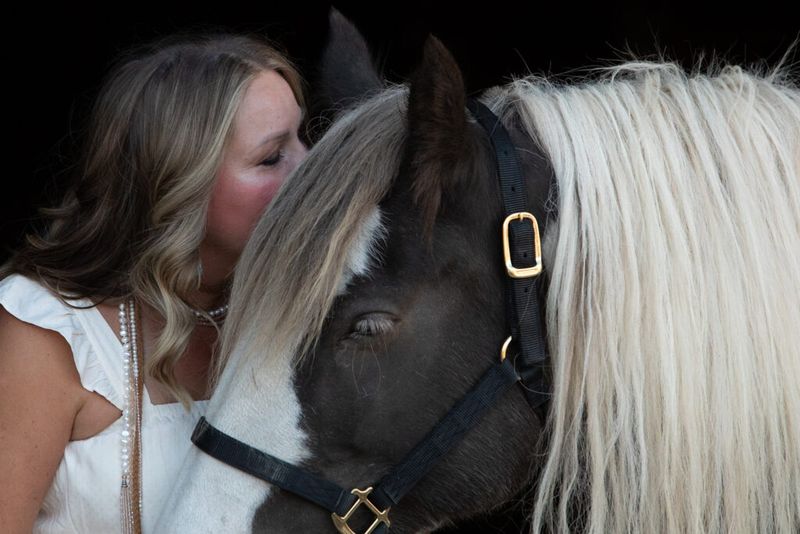
Horses mirror our emotions with uncanny accuracy. Your racing heart and tense muscles telegraph anxiety directly to your equine partner, amplifying their distress.
Take deep breaths and speak in measured tones. Relax your shoulders and move deliberately. Your horse will sense your composure and often respond by settling down themselves.
3. Creating A Safe And Quiet Environment
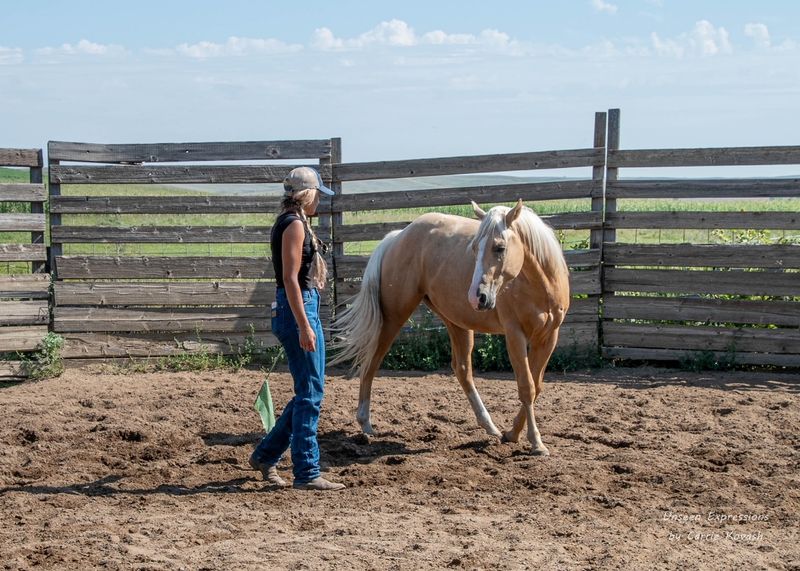
Horses thrive in predictable surroundings. Remove startling stimuli like flapping tarps or unfamiliar animals that might trigger flight responses.
Lead your agitated horse to a familiar, quiet area with minimal distractions. Sometimes a familiar stall or paddock acts as a safe haven. Lower lighting can also help reduce visual stimulation that might be overwhelming them.
4. Using Gentle Voice Commands
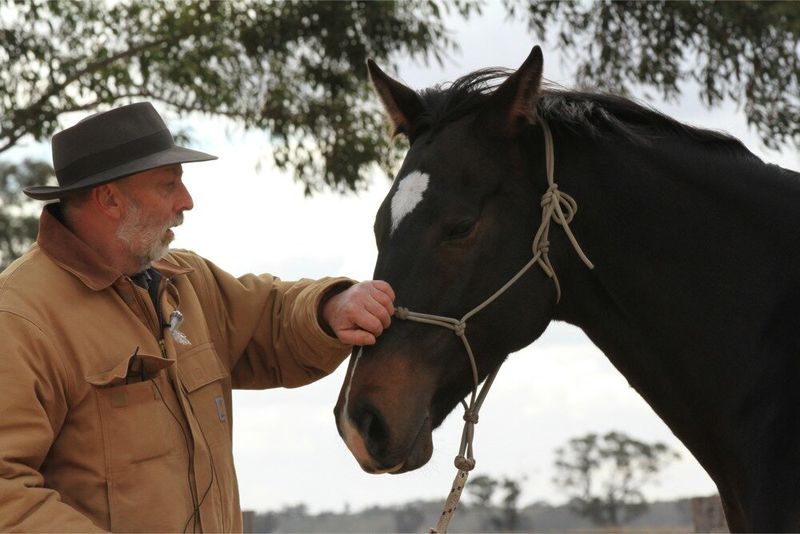
Your voice is a powerful tool for reassurance. Speak in low, melodic tones that carry confidence without sharpness. Familiar phrases like “easy now” or “good boy” can break through panic.
Many horses respond well to humming or singing, which maintains a steady rhythm that grounds them during stress.
5. Providing Physical Contact
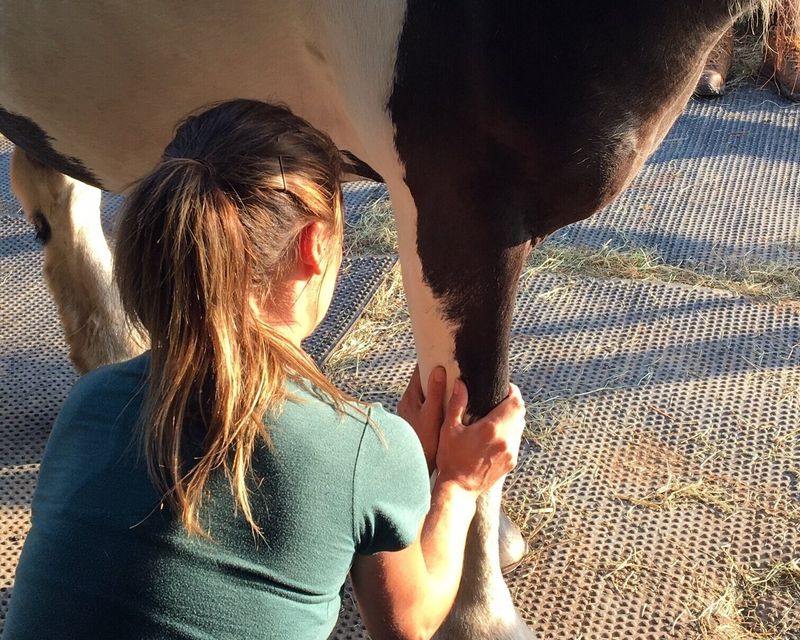
Rhythmic touches along your horse’s neck or shoulder can interrupt stress patterns. The “TTouch” method—gentle circular motions with your fingertips—often works wonders for anxious equines.
Some horses find pressure points particularly soothing, like the poll or chest. Always start with minimal contact, gradually increasing as your horse begins to accept the comfort you’re offering.
6. Using Positive Reinforcement
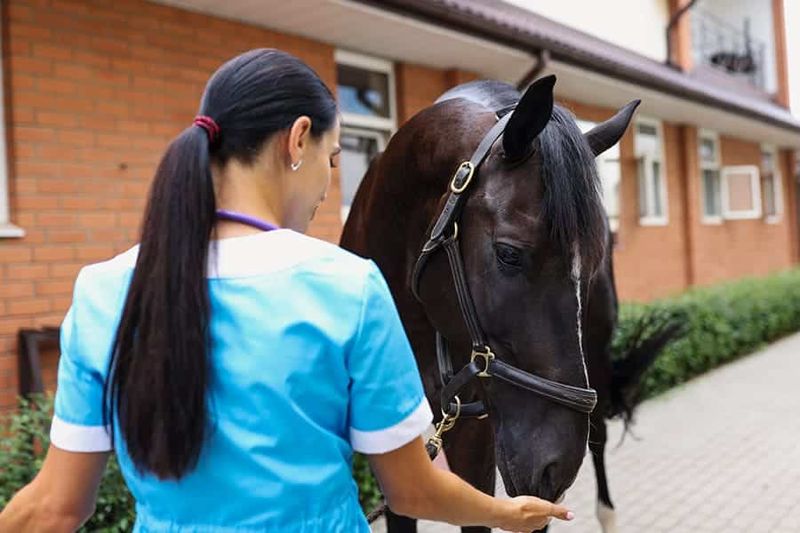
Reward even small moments of calmness immediately. A well-timed treat or scratch in a favorite spot creates powerful associations between relaxation and good things.
Clicker training shines here—the distinct sound marks the exact moment of desired behavior. Consistent positive reinforcement builds a horse’s confidence, making them less likely to panic in future stressful situations.
7. Allowing The Horse Time To Settle
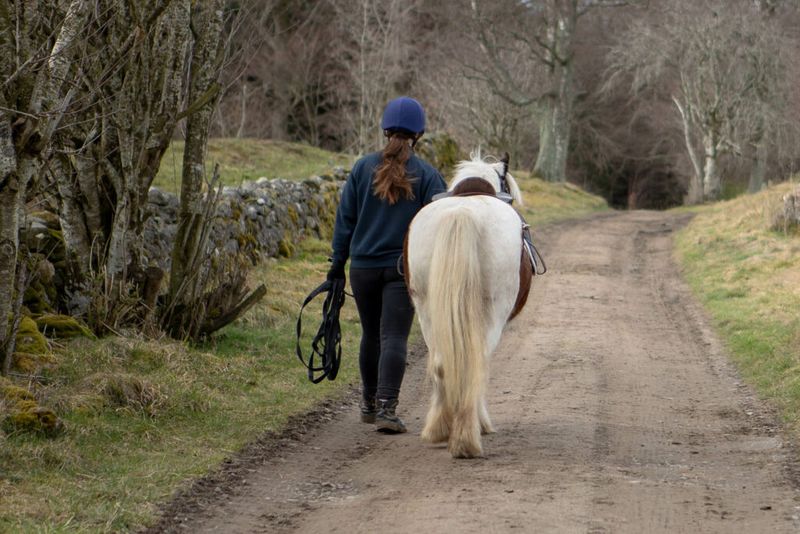
Rushing a frightened horse only compounds their anxiety. Stand quietly nearby, giving them space to process their emotions without pressure. Horses need time to reset their nervous systems after activation.
What seems like stubbornness might actually be their brain catching up with their body. Patience now prevents reinforcing anxious behaviors.
8. Breathing Techniques For Both Horse And Rider
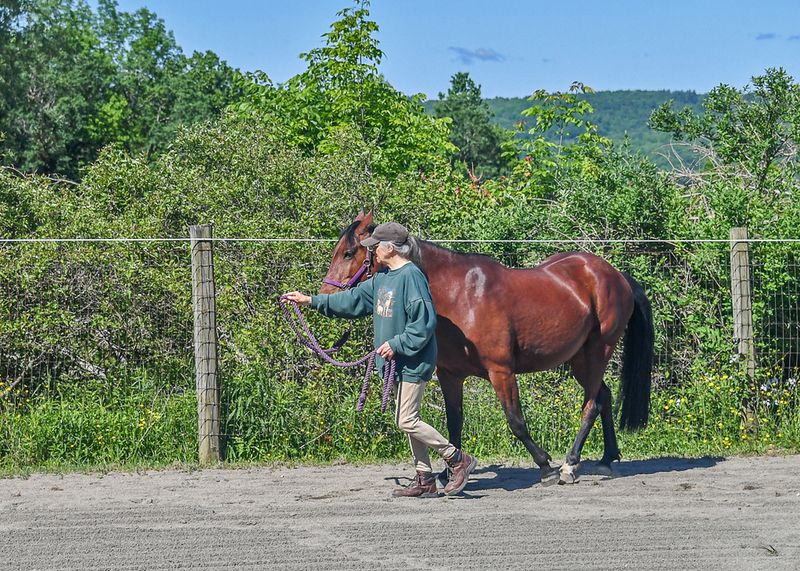
Horses naturally synchronize breathing with trusted companions. Exaggerate your inhales and exhales, making them audible enough for your horse to notice.
Place your hand on their nostril to create awareness of your breathing pattern. This biological connection can transform a panicked horse within minutes as their respiratory rate matches yours.
9. Distraction Techniques
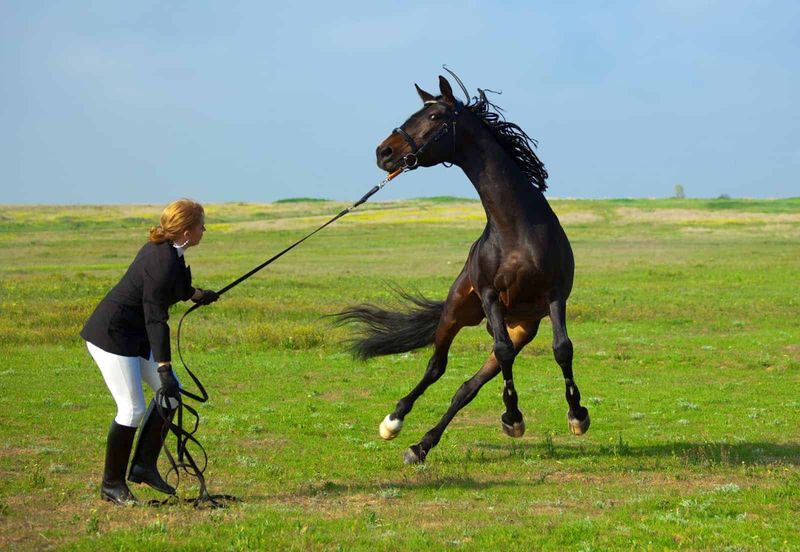
Redirect your horse’s fixation on the scary thing with something familiar. A simple groundwork exercise they know well can shift their mental focus away from perceived threats.
Backing up requires mental engagement and can break a fear cycle. Even offering a handful of hay might interrupt the stress response long enough for rational thinking to return.
10. Avoiding Physical Punishment
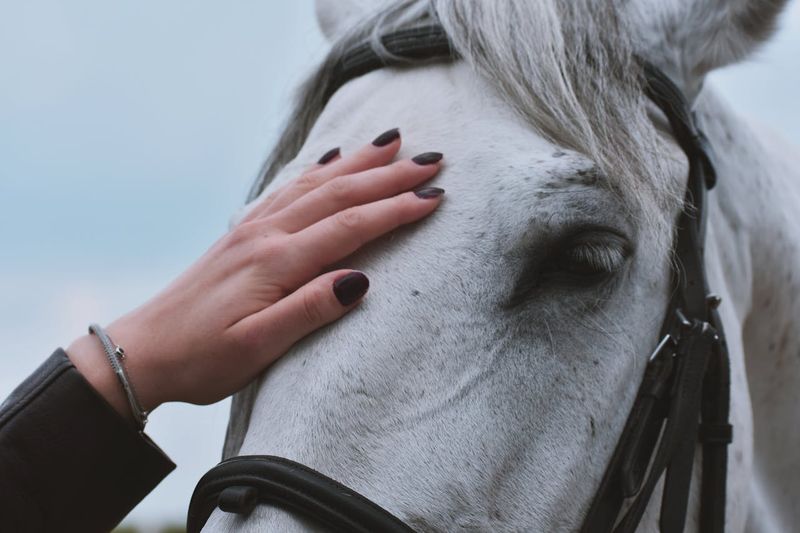
Harsh corrections trigger more fear in an already frightened horse. Physical punishment creates negative associations that worsen future reactions. Remember that fear isn’t disobedience—it’s survival instinct.
Punishment damages trust precisely when you need it most. Instead, guide your horse through their fear with consistent, firm kindness that builds confidence.
11. Utilizing Aromatherapy Or Calming Products
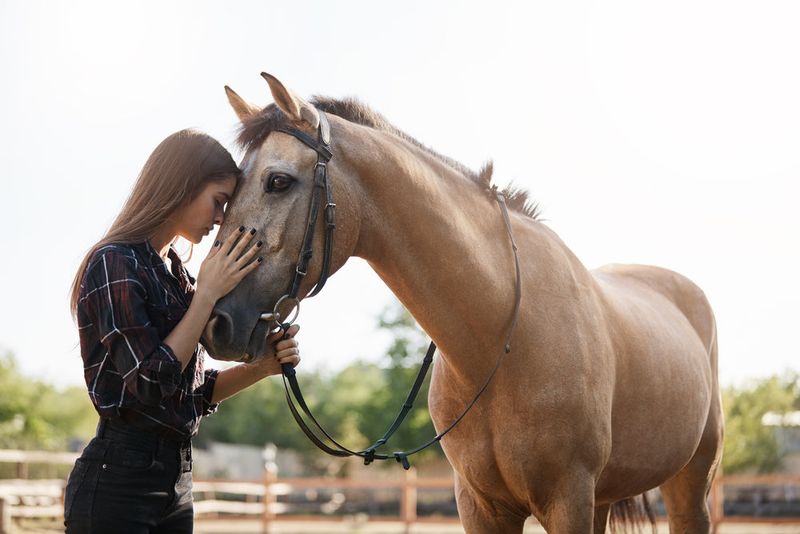
Lavender essential oil dabbed on your hands before handling can soothe through scent pathways. Commercially available pheromone sprays mimic natural calming signals horses exchange. Herbal supplements containing valerian or chamomile show promising results for some equines.
Always introduce any calming aid gradually, monitoring your horse’s individual response rather than expecting an instant transformation.
12. Training For Long-Term Calmness
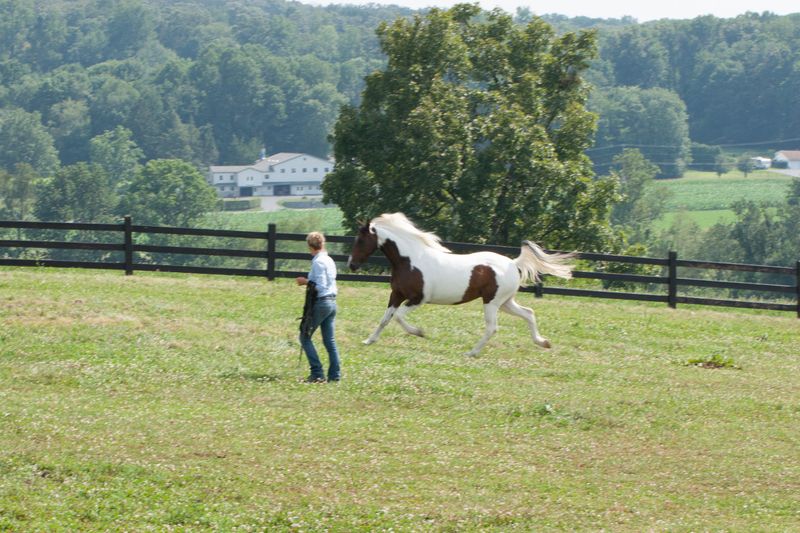
Systematic desensitization builds lasting resilience. Gradually introduce mild versions of triggers at a distance where your horse remains calm. Reward relaxation, then incrementally increase exposure as confidence grows.
This methodical approach rewires their brain’s threat assessment. Over time, previously scary situations become routine, creating a bombproof horse that trusts your leadership through genuine experience.



